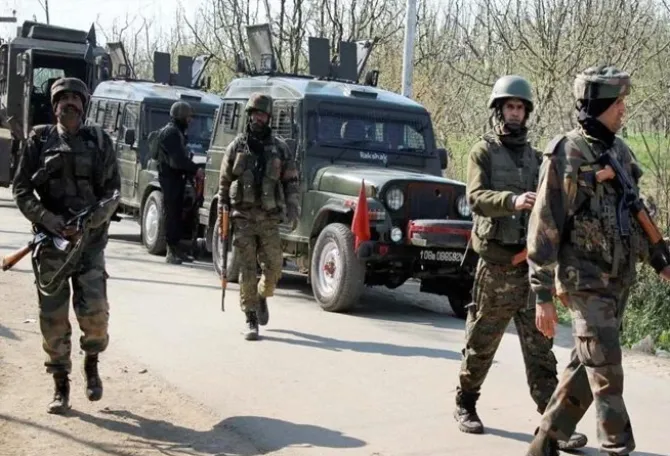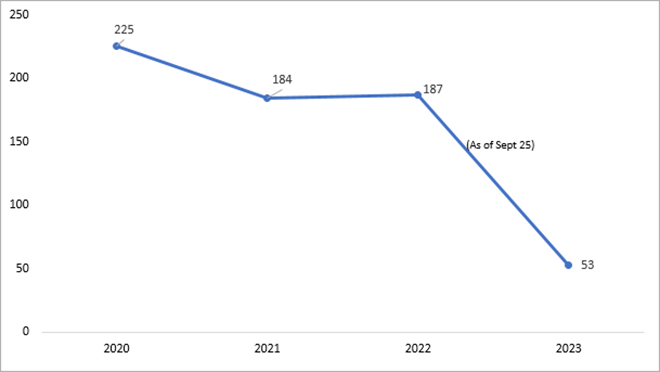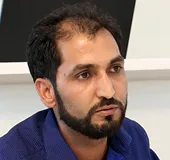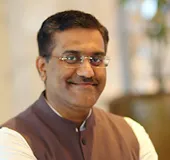
The recent seven-day counterterrorism (CT) operation, from 13-19 September 2023, in Kashmir’s Anantnag district ended with the loss of four lives, including three senior security forces officials. In addition, two terrorists including the commander of Lashkar-e-Taiba (LeT), Uzair Khan, were killed. The terrorists strategically chose a site in the steep and dense forest to extend the encounter, but security forces used new hi-tech tools for surveillance and delivery of firepower, as well as high-impact precision fire drones to neutralise them. The Anantnag encounter shows that terrorists in the Kashmir Valley, unable to face security forces in urban environments, are now choosing dense forests to engage them. This trend has particularly visible since 2020, when terrorist groups shifted their operations from the Valley to the forested areas of Poonch and Rajouri in the Pir Panjal ranges. Since then, 26 soldiers, including five para troopers have been, killed in the CT operations in this area during the last three years.
Boosted by the new administrative reorganisation and improved centre-union territory dynamics, in 2020, security forces neutralised 225 terrorists including 47 commanders of different terror outfits in J&K.
Current state of terrorism
In 2019, the Indian government abrogated Articles 370 and 35A in a bid to end radicalisation, separatism, and terrorism. Boosted by the new administrative reorganisation and improved centre-union territory dynamics, in 2020, security forces neutralised 225 terrorists including 47 commanders of different terror outfits in J&K. Furthermore, 299 terrorists and their associates were arrested. In the next year in 2021, 184 terrorists including 20 Pakistani terrorists were neutralised. This trend has continued subsequently: of the total 187 terrorists killed in J&K last year, 57 were Pakistanis and 130 were locals. As of 25 September 2023, security forces have neutralised 53 terrorists. Out of these, only 11 were locals, the remaining 42 being Pakistanis. Between 2019 to 2022, the percentage of local terrorists killed was 83 percent. In 2022, there was a sharp decrease in local terrorists, whereas, the percentage of elimination of foreign terrorists increased to 43 percent. Figure 1: Total Terrorists Killed in J&K (2020-2023)
 Source: Indian Security Agencies
Source: Indian Security Agencies Besides terrorists, security forces have also cracked down on other parts of the ecosystem. For instance, the Over Ground Workers (OGW) network has been completely dismantled, as witnessed by the arrest of 635 OGWs and recovery of 426 weapons. In addition, the
increased crackdown on terror funding has made things difficult for terror groups operating within the Valley, especially in South Kashmir. Also, there has been a dip in terror recruitment. In the first nine months of 2023, only
25 individuals joined terrorist groups, which is a significant decline compared to 143 in 2019 and 100 in 2022. Moreover, through the reinvigorated surrender and rehabilitation policy, as
many as eight misguided youths surrendered during encounters and
around 50 gave up militancy quietly.
The increased crackdown on terror funding has made things difficult for terror groups operating within the Valley, especially in South Kashmir.
Security agencies have also reported a significant decrease in successful infiltrations in the last two years. In 2021, there were 31 successful infiltrations, which dropped to eight in 2022. The number of terrorists killed during infiltration attempts also increased from six in 2021 to 16 in 2022. In 2023, security forces were able to eliminate over 26 terrorists who attempted infiltration along the Line of Control (LoC). According to the latest Jammu and Kashmir Police (JKP) data, there are currently 81 active terrorists, 33 of whom are locals and 48 are foreigners. South Kashmir is the region with a significant number of active terrorists, with a total of 56, including 28 foreign and local recruits. These developments have forced the terrorist tanzeems (organisations) to switch gears and geographies.
From Kashmir to Pir Panjal
It is important to mention that 31 of the terrorists killed this year were eliminated in the southern region of Pir Panjal, bordering Pakistan and along the LoC. The drastic increase in the presence of Pakistani terrorists, especially in the dense forests of Pir Panjal, is to keep the terrorism alive and maintain international focus on Kashmir. They appear to be using guerrilla tactics—target the security forces and then go back to the dense forests in the Pir Panjal area and regroup for another attack. The terrorists from across the LoC share the same ethnicity and language, allowing for easy assimilation and making it difficult for security forces to detect them. Subsequently, in contrast to the Kashmir Valley, which has flat terrain and an established road network, the transportation system in the southern region of Pir Panjal is not well-developed.
The terrorists from across the LoC share the same ethnicity and language, allowing for easy assimilation and making it difficult for security forces to detect them.
While the security agencies are trying hard to formulate the CT strategy in the South of Pir Panjal, they are confronting a new menace—disinformation. Even as the Anantnag encounter was raging on, some media houses made strong accusations that terrorists involved in the encounter had detailed information about the movement of troops from terror handlers in Pakistan-occupied Kashmir—suggesting the role of an insider. A video uploaded by a local news agency alleged that the recently arrested and suspended Deputy Superintendent of Police of JKP, Adil Mushtaq, had been involved in leaking this information. This forced the JKP to step in to dispel these rumours and also asked the retired security officials to restrain from spreading disinformation. The video was seen as an attempt to promote divisions among security agencies.
Emergence of virtual terrorist groups
Another significant trend that has been observed is the rise of virtual terrorist groups, which ostensibly have no antecedents. In the last three years, groups like The Resistance Front (TRF), Jammu Kashmir Ghaznavi Force, and People’s Anti-Fascist Front (PAAF) have come to the fore. These are nothing but front organisations for LeT and other terrorist outfits. TRF, for instance, mostly uses the funding channels of the LeT. PAAF, meanwhile, is a proxy of Jaish-e-Mohammed, which was responsible for the deadly Lethpora suicide attack of February 2019. These groups have adroitly used social media platforms such as X, Telegram, and Facebook to push their narrative and propaganda, primarily focusing on issues like the alleged conspiracy to turn Kashmir Valley into a Muslim-minority region. They have also warned locals from working as Special Police Officers (SPOs).
A video uploaded by a local news agency alleged that the recently arrested and suspended Deputy Superintendent of Police of JKP, Adil Mushtaq, had been involved in leaking this information.
Conclusion
The above developments indicate Rawalpindi and Islamabad’s determined push to stir up trouble in the Kashmir Valley, amidst the onset of normalcy. Due to constant scrutiny by the Financial Action Task Force (FATF), Pakistan has resorted to creating new entities, which will take away the focus from anti-India terrorist groups thriving on its soil and project Kashmir’s insurgency as a local one. India will have to formulate a new counter-terrorism strategy that effectively uses technology, while also monitoring and counteracting the media’s role in promoting terrorism through disinformation and division within security agencies.
Ayjaz Wani is a Fellow with the Strategic Studies Programme at the Observer Research Foundation. Sameer Patil is a Senior Fellow at Observer Research Foundation.
The views expressed above belong to the author(s). ORF research and analyses now available on Telegram! Click here to access our curated content — blogs, longforms and interviews.





 PREV
PREV



